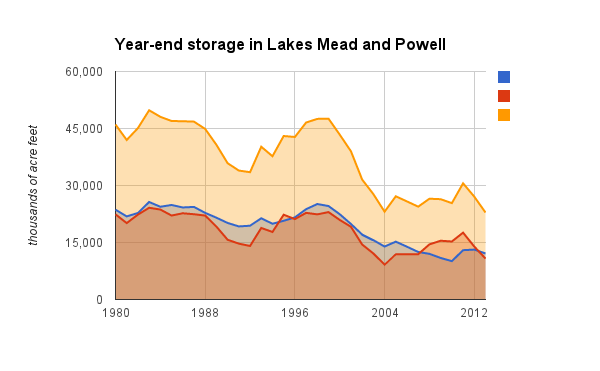Busy with New Mexico’s drought, I’ve been paying scant attention to the rollout of California’s Bay Delta Conservation Plan, AKA the Peripheral Thingie. This is the scheme to build tunnels beneath the Sacramento-San Joaquin Delta to move water south to California farms and cities. It’s the biggest and most interesting US water policy gambit out there right now, and with no particular dog in the fight, I’m just watching with amused wonder as California tries to sort out the most interestingly wicked of common pool resource problems.
Chris Austin, whose Maven’s Notebook has become my favorite landing spot for tracking the situation, quoted a striking comment from John Laird, California’s Natural Resources Secretary. Laird was observing the way the current discussion feels in some way like a replay of California’s fight over the Peripheral Canal 30 years ago:
Back in 1982, when the voters rejected the peripheral canal, “many Californians just locked themselves into what they think about the Delta or water policy out of that experience, but the whole world has changed since then in many, many different ways and they’re still sort of locked in what happened.”
So here’s my question for the California water nerds in the audience – and it’s serious, not rhetorical. In the most recent round of discussions about the BDCP, who said something that surprised you? Or, to put it another way, how has the discussion changed in 30 years?



